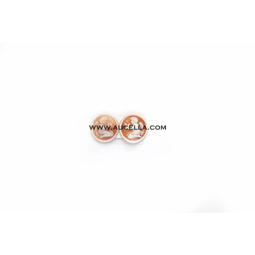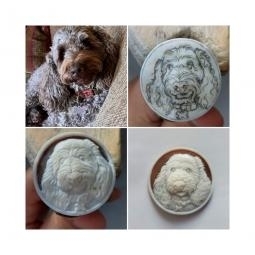Cameos on Sardonyx and Cornelian Shell
08-02-2022
Cameo engraving in Torre del Greco is now a bicentennial art, although it has much more ancient origins. From the recent findings at the Pompeii excavations, several engravings on semi-precious stones have been found.
Although the pieces recovered are not on shells, this constitutes important proof that the peculiarity of Torre del Greco comes from far away.
Some families of engravers in Rome, such as the Saulins, dedicated to the engraving of bas-reliefs on semi-precious stones were claimed in Naples during the Bourbon Kingdom to teach this ancient art. From Naples to Torre del Greco the step was short, but they began to engrave on different supports. From agates and semi-precious stones they passed to shells.
Shells for cameos
Shells have always been the real protagonists of the cameo engraving typical of Torre Del Greco: there are only two shell families used: the cassis rufa and the cassis madagascariensis.
These two types consist of two layers of different colors, one on the background and one on the surface. Referring to the art of the glyptic, the ancient cameo engraving technique involves the removal of the surface layer, allowing the desired design to emerge in the few millimeters available with a skilful play of chiaroscuro. Like Michelangelo with his statues in the making from marble, the master engraver is not enough to imagine what he wants to engrave, but he must know the raw material thoroughly, study it and analyze it in particular in its defects.
Cassi Rufa and Cassis Madagascariensis
Cassis Rufa is commonly known as a cornelian shell, due to its coloring very similar to the stone of the same name. It has small dimensions and is harvested in Africa. It was the first shell used by the cameists in Torre del Greco. The background color tends to red, while the surface color turns towards beige. It is the shell that for years has been used for the creation of the classic woman's face or typical reproductions.
Cassis Madagascariensis is more commonly known as a sardonic shell. Its scientific name probably derives from a geographical attribution error, in fact it comes from the seas of Central America.
It has a completely different shape from the cornelian shell. It has a larger texture and alternating colors from brown for the background to white for the top layer.
Currently it is the most used type of shell for cameo engraving in Torre del Greco, although its processing was introduced later than the Cassis Rufa and despite being more expensive. The contrast between the two layers allows a better reading of the engraving and is very suitable for personalized cameos, such as cameos with reproductions from photos, cameos with dog faces, cameos with brands and logos, cameos with signs of the zodiac or cameos with names of person, such as those proposed in the section dedicated to personalized cameos on our site





Leave a Message
Click here to use Whatsapp